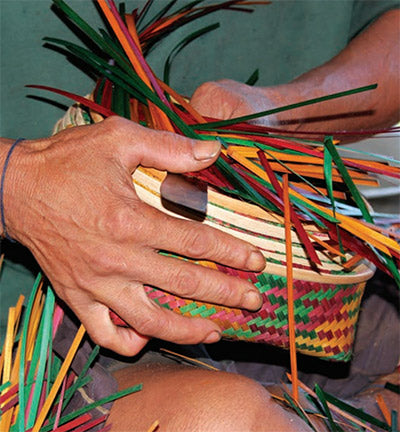Traditional handmade Bangchungs are made from unique bamboos that grow on the hills of Eastern as well as central Bhutan
This was originally used as a plate for eating rice throughout historical times and even today people in the east, carry food and snacks during long travel. Although Bhutanese have started using modern plates, Bangchungs are popular and used as offering bowls in temples, special occasions and traditional rituals\Most Bhutanese also use Bangchungs at home as decor items or as gifts for friends and relatives.
Bangchug (Regular)
Bangchung is made of Yula, a type of bamboo, and with beautiful patterns. They are mainly made for decorative purposes. They are also used for storing sweets and snacks. The rim of the bangchung is made from using bamboo or cane strips and woven with cane thread.
Bangchung (Nyicema)
Bangchung Nyicema is also made of Yula with colored patterns. It is used as serving plates, and the traditional practice of serving snacks or food to guests and lamas. It has a swastika pattern that symbolizes permanent friendship and faith.
Bangchung (Tangkama)
Bangchung Tangkama is a larger version among different types of Bangchungs. It is used for carrying pack lunch and as a packing container to send parcels. People also carry religious offerings to the monasteries and other places of religious and cultural significance.











